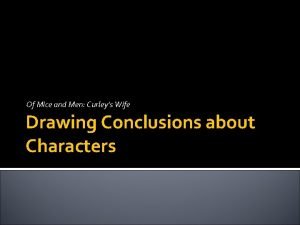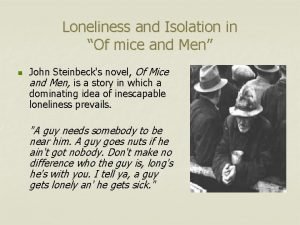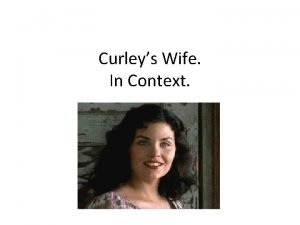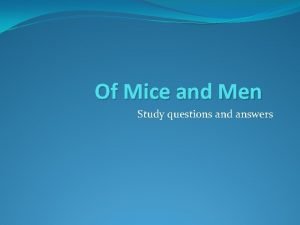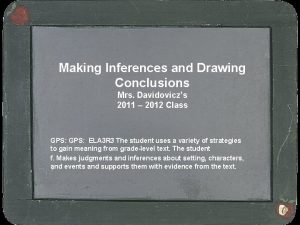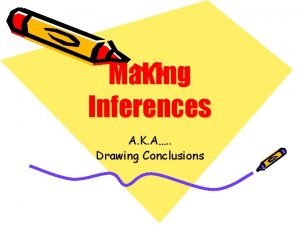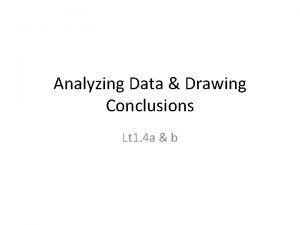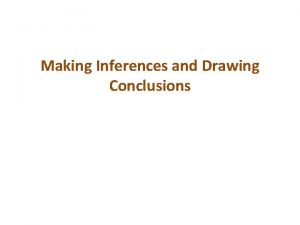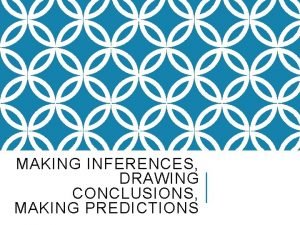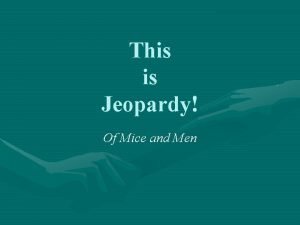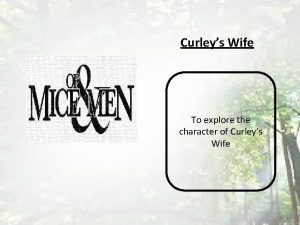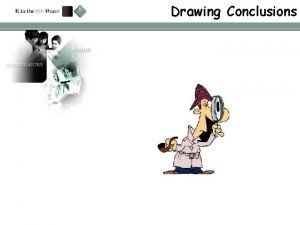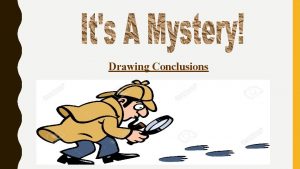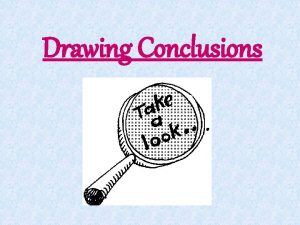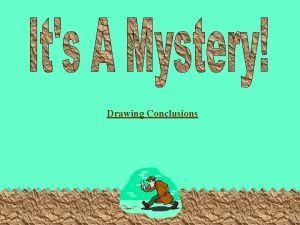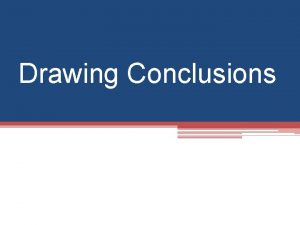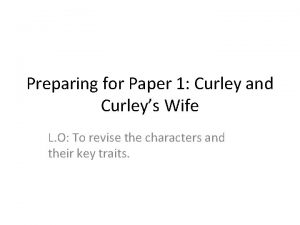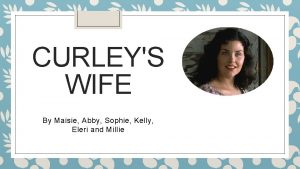Of Mice and Men Curleys Wife Drawing Conclusions











- Slides: 11

Of Mice and Men: Curley’s Wife Drawing Conclusions about Characters

-Pick up handout: Drawing Conclusions Worksheet -Open OMAM books to pages: 31 -32 (black book), 34 -36 (blue book). - In READING LESSON SECTION write the date (10/28) and the lesson title “Drawing Conclusion about Characters”

ENGAGED PARTICIPATION How do I earn a 3 today? 3 Complete work Do not be a disruption NO HIB Positive contributions in whole class discussion/sharing Utilizing time up to the bell Willing to take risks as a learner (Ask questions, etc) Work collaboratively with your table partner when given time to do so Stay on task 4 • Consistent in all “ 3” areas (modeling for others) • Help your partner when possible • BE A LEADER!

Drawing Conclusions (Take Notes in your Reading Lessons section. ) Drawing conclusions requires the reader to use experience and clues from the text to form a logical conclusion. Conclusions are NOT found directly in text. Conclusions require consideration of relevant experiences. Conclusions must be logically supported by text evidence. There is no “right” answer. (However, there are wrong answers; those NOT supported by text evidence. ) Drawing conclusions are inferences that are based on several pieces of textual evidence.

Q: How do we draw conclusions about characters? A: Consider how we learn about people. Joan is a new student at Timberline. How are you going to get to know or learn about Joan? With partner, BRAINSTORM a list of ways to get to know Joan.

6 ways to Draw Conclusions About Characters (Characterization) (These ways should be in your Iceberg Notes. If not, copy them now. ) 1. 2. 3. 4. 5. 6. Speech Actions Thoughts and Feelings Physical Appearance Response of Others Direct Comment by Author

Gather evidence* about Curley’s Wife (Fill in chart as we read) *What does the book tell us about Curley’s Wife? Speech Actions Thoughts/Feelings Physical Appearance Responses of Others Direct Comment

With your partner… Review the evidence on your chart. What can you “assume” about Curley’s Wife? What is your evidence? Your assumption = a conclusion! Complete the statement below: (Write this conclusion in your comp books. ) One conclusion a reader can draw about _Curley’s Wife_ is _____ because… (Name 1 or 2: speech/ action/ thoughts/ physical appearance/other character’s response/ direct comment).

Does the conclusion work? 1. Does the conclusion require “reading between the lines” (NOT directly stated)? 2. Is there evidence from the passage to support/prove the conclusion? 3. Are there several pieces of evidence supporting the conclusion? 4. Does the conclusion name one or two of the 6 ways of characterization (speech, action, thought/feelings…)?

Next Week’s Homework Use the drawing conclusion stem in order to analyze a character from your book. One conclusion a reader can draw about _(Character name)_ is _____ because… (Choose 1 or 2: speech/ action/ thoughts/ physical appearance/ other character’s response/ direct comment). List 3 pieces of evidence to support conclusion.

ENGAGED PARTICIPATION How did I do today? 3 Complete work Do not be a disruption NO HIB Positive contributions in whole class discussion/sharing Utilizing time up to the bell Willing to take risks as a learner (Ask questions, etc) Work collaboratively with your table partner when given time to do so Stay on task 4 • Consistent in all “ 3” areas (modeling for others) • Help your partner when possible • BE A LEADER!
 Of mice and men curley's wife drawing
Of mice and men curley's wife drawing Curleys wife loneliness
Curleys wife loneliness Curleys wife
Curleys wife Study guide answers to of mice and men'
Study guide answers to of mice and men' Drawing conclusions and making inferences powerpoint
Drawing conclusions and making inferences powerpoint Drawing an inference
Drawing an inference What conclusion can you draw out form the pie graph
What conclusion can you draw out form the pie graph Drawing conclusions and generalizations
Drawing conclusions and generalizations Making inferences and drawing conclusions
Making inferences and drawing conclusions Making inferences drawing conclusions
Making inferences drawing conclusions The wanderer poem alfred david
The wanderer poem alfred david Of mice and men jeopardy
Of mice and men jeopardy
